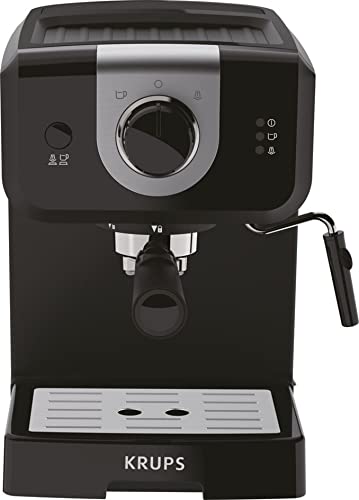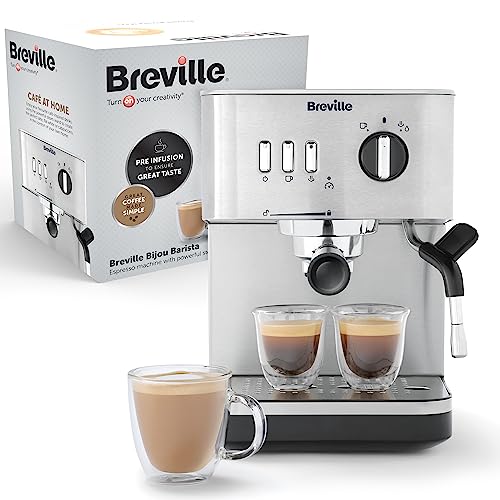How Does machine
uk espresso machine -
Visit gtrade.cc - Work?
Machine espresso makes use of precise pressure and mind-blowing filter technology to make the coffee we love. How exactly does it work?
To make espresso hot water is pushed under pressure through finely ground coffee. The process is similar to that of making drip coffee. However, the pressure is the main difference.
The Head of the Group
The group head is the portafilter is inserted when you are making espresso. It disperses water into the portafilter and regulates the pressure of the extraction. There are a variety of types of group heads, each with their unique advantages and drawbacks. Some are designed to provide stability in temperature, while others are designed to handle pre-infusion. Some are designed to control the lever. There are some that come with a range of features, such as the E61 one, which is to be the most popular among baristas because of its ability to offer multiple benefits in one package.

As you can see in the above photo the head of the group has a number of notches. The portafilter is placed in these notches, then twist the head to lock it. There is also a rubber gasket which is located inside the notches, which helps create an airtight seal when you insert your portafilter into the machine. The notches on the head permit a precise placement of the portafilter, which is vital for a consistent extraction.
In addition to allowing you easily place your portafilter in, the group head is also responsible for maintaining a consistent temperature. This is done by cycling hot water around the portafilter and through the brew-basket, ensuring that the temperature is always at the right level to extract the coffee. It is crucial to keep in mind that even a few degree difference can make the difference between a good and a excellent espresso.
The Pump
The motorized pumps in
cheap espresso machine machines that rotate provide the nine atmospheric bar pressure needed to extract
mini espresso machine. This is different from manually operated piston machines that employ levers. The pressure is created by pumping water through a heat exchanger and then through the ground coffee.
Pumps tend to be cheaper than piston-driven machines, and tend to last longer, however both types of machines may become damaged due to excessive use and poor cleaning. They also add mechanical complexity and can lead to a high price tag on even the simplest models.
Some espresso machines make use of steam pressure instead of a pump for brewing espresso. This can lead to over-extraction as the boiler that makes steam also heats the water until it comes to a boil. Additionally these machines are often required to restore their pressure between cups, which requires time and energy.
Many espresso machines employ an rotary or vibrating pump, with a vibrating model that uses a vibrating disc to create the pressure, and a rotary model pushing hot water through the grounds under high speed. Both machines produce great espresso, but rotary machines are more stable, quieter and less likely to fail.
The Boiler
The boiler is the part that heats the water to the ideal temperature for extraction. The steam that is created reaches the portafilter, which holds the espresso grounds. It is then poured into the cup. During this process the steam is able to create enough pressure to push the grounds of the coffee through. This results in a layer crema on top. This is a hallmark of a great espresso.

There are three kinds of espresso machines, each with distinct pumps and the temperature of the brew. There are many ways to control the strength of the brew and the size of the cup that can be produced by the machine.
The first espresso machines were steam-types. The first espresso machines were steam types. This resulted in the coffee tasting bitter and burnt. The modern espresso machine was designed by the Milanese manufacturers Luigi Bezzerra & Desiderio Pavoni.
The most common espresso machine is a semiautomatic model with an electric pump. When people think of espresso machines, they think of these machines. If you have a semi-automatic machine you have to grind the beans and then tamp them yourself but the pump controls the flow of water and pressure. This is a great compromise between the human touch and the mechanized quality.
The Filter
Typically, espresso machines have filters to separate the grounds of the coffee as they go through the hot water. The filter is also an essential element of the machine's temperature control, since it helps to prevent overheating.
Filters also aid in flavor since it allows for the beans to flower for a longer period of time. This allows the beans to release their flavors, and also allows for better extraction.
However it is crucial to keep in mind that even a great filter can make a terrible cup of coffee, as the quality of the beans and extraction are important.
This is where the magic happens, it's what makes an espresso really taste great. The grouphead (also called the brewhead) is where you place the portafilter - the thingy that you use to put the grounds of your coffee into when making espresso.
Steam-driven espresso machines make use of hot water heated in an airtight container to create steam. The steam then pushes hot water into the grounds of coffee under high pressure. They are less expensive and are easier for the user to maintain than pumps-driven models. They are however limited to create the perfect conditions for brewing as they only operate with 1-1.5 bar of pressure. The perfect shot requires 9-10 bars.
In recent years, espresso machines powered by compressed air-pump have become increasingly popular. They use an air compressor to push hot water into the grounds, and are far more portable than electric steam-driven machines.